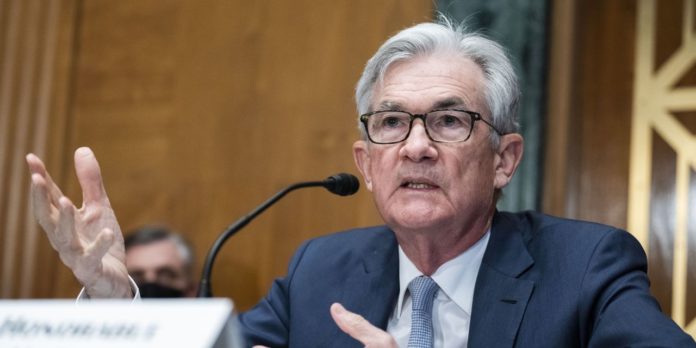Federal Reserve policy makers would like to raise rates in a gradual, stair-step fashion. But they might soon feel the need to get more aggressive.
The Fed on Wednesday raised its range on overnight rates by a quarter of a percentage point, lifting it from near zero for the first time in two years. And the central bank signaled the hikes will just keep coming, with its policy makers projecting the midpoint of its range on rates to hit 1.875%—a forecast that implies quarter-point hikes at each of the Fed’s remaining six meetings this year.
By the end of next year, the projections show rates hitting 2.75%, which would be the highest mark since March 2008.
How much the Fed ultimately raises rates will, of course, depend on how the economy progresses in the years ahead. But the sharp move up in policy makers’ rate projections—in December they thought rates would end this year a full percentage point lower than they do now—shows how much their views have changed.
Moreover, their view that they will be sending rates much higher over the next year suggests a worry that they are behind the curve. The only way to get in front of it might be to get rates higher faster—in other words, some half-point increases.
The first one could come as soon as the Fed’s next policy-setting meeting, in early May. At that point, the central bank will have some more big data points on the things it cares about the most: employment and inflation.
On the employment front, it will have the March jobs report in hand, and even though the April job figures won’t get released until a couple of days after the meeting, the central bank could have a sense of what the report will show. So far, signs point toward more strong job growth. Employers have millions of open positions to fill, and right now it doesn’t look as if worries about Russia’s invasion of Ukraine, and the increase in oil prices it provoked, have made them any less eager to hire.
As for inflation, the Fed will only have the March data in hand, and that seems unlikely to be much better than February’s—not with the jumps in the prices of gasoline that have arisen since the war in Ukraine began late last month. It is possible that the war will have ended by the Fed’s next meeting, potentially bringing some price relief at the pump. But an absence of war-related uncertainty might make the Fed less nervous about the economy’s ability to stomach larger rate increases.
The Fed’s newfound worries about inflation could still prove overwrought. There have been indications lately that some supply-chain strains have begun to ease, despite the complications brought on by the Ukraine crisis, for example. By the summer, the central bank might not be in such a hurry to raise rates.
But that won’t stop it from being in a hurry now.
Write to Justin Lahart at justin.lahart@wsj.com
Copyright ©2022 Dow Jones & Company, Inc. All Rights Reserved. 87990cbe856818d5eddac44c7b1cdeb8
Source link






